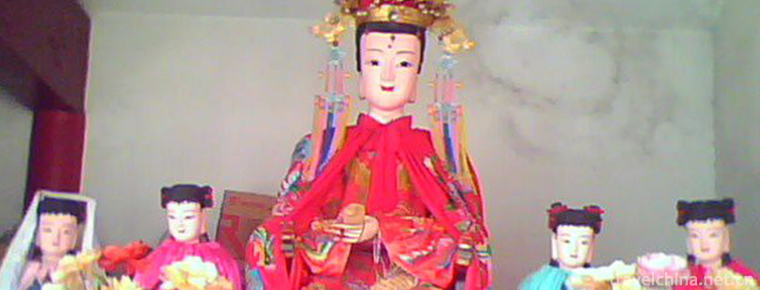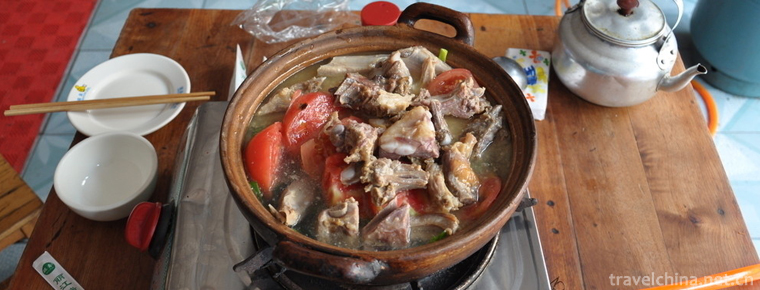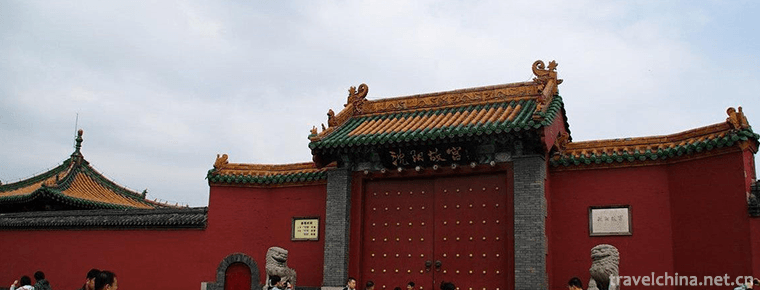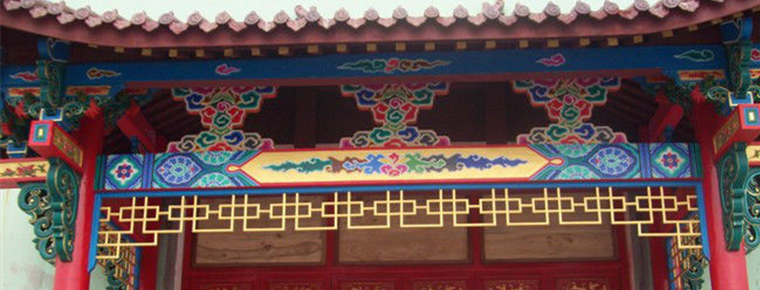Legend of Filial Women in the East China Sea
Legend of Filial Women in the East China Sea
The filial woman in the East China Sea is an ancient folklore story. Her real name is Zhou Qing. It comes from Biographies of LieNu and Biographies of Yu Dingguo. The filial woman died very early and had no son, but she was very considerate in supporting her mother-in-law. Because she did not want to drag her down, her mother-in-law hanged herself. However, the filial woman was jailed and beaten into a soldier, and finally killed by the Taishou. When the filial woman was cut off, she made three wishes, such as unjust killing, bloody generals. Three years of backflow, June snow, and drought. (Three wishes were seen in the later version, but not in the early stage.) Three years after the death of the filial woman, the county was in a severe drought, until the new Taishou personally memorized the tomb of the filial woman and praised her virtues, and the genius began to rain. Ganbao recorded that the blue and yellow blood flowed upwards along the long bamboo pole when the filial woman died, and then down the pole top. The story has a far-reaching impact on later generations. On this basis, Guan Hanqing created Dou'e Injustice, one of China's ten tragedies.
On November 11, 2014, Donghai filial piety women were approved by the State Council and listed in the fourth batch of representative projects of national intangible cultural heritage.
Textual research on native place
There are two main theories about the origin of filial piety women in the East China Sea: one is Tancheng County, Linyi City, Shandong Province, and the other is Chaoyang Street, Lianyungang City, Jiangsu Province.
Tancheng statement
According to historical records, Donghai County in the Han Dynasty was Tancheng County in Linyi City. So Zhou Qing, Dou E's prototype widow in Donghai County, was indeed such a person. Now there is a large tomb in the southeast of Tancheng County called Xiaofu Tomb, which is about Zhou Qing's bones. The original Xiaofu Tomb was only a small mound, which was rebuilt until the early Qing Dynasty, and beside it there was Kang. The inscription inscribed by Emperor Xi. Since Guan Hanqing's famous "Dou'e Injustice Moving Heaven and Earth" came out in the Yuan Dynasty, the filial piety woman in the East China Sea has also become famous. According to folk legend, before her death, Zhou Qing once said, "If her mother-in-law was not killed by her, white blood ran three feet." As a result, when she died, it was really three feet of white blood. Now there is a village name "Bai Xuewang" in the south of Tancheng County. Because the name was unlucky, it was renamed Tannan Village.
Lianyungang Theory
Donghai County is the ancient name of Lianyungang. After Donghai County was abolished, Donghai County still exists today. For quite a long time, Chaoyang Street has been the county government of Donghai County.
Three years after the death of Xiaofu in the East China Sea, the Temple of Xiaofu in the East China Sea and the Tomb of Xiaofu in the East China Sea were built here, but both of them were destroyed during the Cultural Revolution. Now, on the original site, the Temple of Xiaofu in the East China Sea has been rebuilt. The Temple of Xiaofu in the Han East China Sea is one of the oldest and most prosperous temples in the 470 temples and Taoist temples in the Haijian area. E'Yuan is well known even after it has been sung in the north and south of the Yangtze River.
geographical position
3. Testing
Which is the real mound of filial piety in the East China Sea? The mound of filial piety in Chaoyang, Lianyungang City, Jiangsu Province, was destroyed in the Cultural Revolution, otherwise it can be proved archaeologically. Because in the Qing Dynasty "New Records of Yuntai Cheng Xueheng Yuntai Mountains Tour", there is: "Twenty miles to go here is Dou'e's grave, which is ancient and beautiful." It can be seen that the mound of Chaoyang Dou'e was well-known at that time. "Sacrificing the Spring and Autumn Festivals, which is ancient and Fragran But according to the conventional saying, the burial of the tombs in Tancheng is the filial woman of the East China Sea in real history and legend.In Qing Dynasty, Zhili State Chronicle of Haizhou, Jiaqing, it is said that "the filial woman can be seen in Han Shu, Yu Dingguo Zhuan, the Tan people in the East China Sea". Tancheng people, the filial woman is both Tan people and murdered locally, of course, buried in Tancheng.
This is not contradictory, because according to the Historical Records and other historical records, the historical evolution of place names in Tancheng and Lianyungang are as follows:
Xia and Shang Dynasties: Xuzhou, known as "people Dongyi", "people Fangguo", "Yuyi".
In the Western Zhou Dynasty, it belonged to Qingzhou (Yanzhou for one) and was called "the Eastern Yi of the People's Country".
In the Spring and Autumn Period and the Warring States Period, it belonged to Lu first and Chu later. It was called Tanzi State.
The Qin Dynasty belonged to Donghai County, which administered 12 counties including Chengxian, Tancheng, Lanling, Xiangbin, Miao, Xiazou, Huaiyin, Xuyi, Dongyang, Tangyi, Guangling and Ling.
In the Western Han Dynasty, it belonged to Donghai County, which belonged to the Department of Cishi of Xuzhou. Donghai County had jurisdiction over Chenxian, Tancheng, Lanling, Xiangben, Miao, Liangcheng, Xia Pi, Pingqu, Qi, Kaiyang, Linyi, Licheng, Haixi, Lanqi, Nancheng, Shanxiang, namely Qiu and Zhuqi.
In the Eastern Han Dynasty, it belonged to Donghai Prefecture and belonged to the Department of Cishi of Xuzhou. Donghai Prefecture had jurisdiction over Chengxian, Tancheng, Lanling, Xiangben, Qi, Licheng, Zhuqi, Cheng, Houqiu, Hexiang, Changyu, Ganyu and Yinping counties.
From the Qin Dynasty onwards, Tancheng and Lianyungang were all subordinate to Donghai County, and the subordinate relationship remained unchanged until the Eastern Han Dynasty. The districts of Chenxian, Zhuqi, Nancheng and Ganyu in Lianyungang City had been or successively under the jurisdiction of Donghai County. Naturally, the story of filial piety in the East China Sea sprouted in the pre-Qin and Han Dynasties spread widely in Lianyungang. There were filial piety mounds in Tancheng, filial piety mounds in Chaoyang and empty mounds. Taken for granted.
Death cause of filial piety
It is impossible to find out what kind of person a filial woman in the East China Sea is. Historians in feudal society disdained such a small figure. Even the original record was just for rendering the justice of a officials in the East China Sea in judging a case. Folk legends mostly describe the scene after her murder, "blood turned white when she was punished, snow flew in June," and "three years of drought in the East China Sea since then".
As for why filial piety women died, there is no unified statement. It is roughly Zhou Qing's husband died suddenly several years after his marriage, and had to depend on his mother-in-law for a long time. But this kind of life did not last. One day, when his mother-in-law was seriously ill, she accidentally broke the medicine bowl when she gave her Decoction to her mother-in-law. Her mother-in-law suspected that she had done it intentionally, so she filed a complaint against the government and was sentenced to rebellion and executed several years later, the official was tried again in the public. It seems that the fate of a filial woman is bitter enough. Not only does she fail to share the love between husband and wife, but even filial piety is misunderstood and deprived of the right to subsistence. When the whole society crushes a person, the individual is unable to fight against it, let alone a weak woman who is submissive and only knows how to accept adversity.
Standing in front of this mound of filial piety, listening to the echoes of Song Tao, I feel how harmonious and disharmonious man and nature are. Years are like water and life is like song. Every night, when the graves around us are gray, the mound of filial piety is sitting there alone, without any mourning. It has been forgotten by people. During the day, children are on it. Facial play, dusk time, unknown birds rest on it, morning sunshine spreads on it, evening shadows swallow it up again. It may be lonely forever. People have no time to think about the ancient feelings, they have to float in the eunuch sea and commercial sea to make a better life for themselves. Who can say that time has no distance, people face the filial women of the East China Sea, have already. After the disappearance of the sad smell, chewing is only a story, a legend, but who can say that time can dilute everything, after a thousand years of time and space, we can still feel her melancholy, her breath, let us better examine their lives and future.
The story of filial piety in the East China Sea has been recorded in numerous local documents such as Haizhou Chronicle and Yuntai Mountain Chronicle in ancient and modern maritime areas.
Guan Hanqing, a great dramatist of the Yuan Dynasty, wrote the play Dou'e's Injustice, a masterpiece of ancient times, which made the image of filial piety women in the East China Sea spread more widely. Due to the influence of Guan Hanqing's drama, the filial piety women in the East China Sea changed from Zhou Qing to Dou's.
The earliest occurrence of filial piety for Dou's family was "The Story of Dou's Ancestral Hall for Filial Piety Women in the East China Sea" written by Liu Zhao of Zhaoshan County in the fifteenth year of Chenghua Ming Dynasty: "The name of the filial piety woman in the East China Sea is Dou's family".
More specifically, the reference to Dou E can be found in the Qing Dynasty Journey to Mountains of Yuntai Xinzhi. Cheng Xuehuan Yuntai: "Twenty miles to the tomb of Dou E, the ancient fragrance can be hanged."
Inheritance significance
Oral Inheritance of Filial Piety Culture Group
Although filial piety women in the East China Sea is a popular folk myth and legend, the mounds of filial piety women, the ancestral hall of filial piety women, Yu Gong, Yu Cemetery and Baixuegou mentioned in the story all exist.
The mound of filial piety is located in the southeast of Tancheng County Government's residence, about 2 miles east of Dongwaihuan Road, 20 meters east of Gezhuang Village, Tancheng Town. The mound is 5.6 meters high and 180 meters long. The mound is situated in the north and faces the south. It is an ancient relic left over from the late Western Han Dynasty. Although it has gone through vicissitudes, the mound of filial piety women is still well preserved, and many people come to hang it every Spring Festival or Qingming.
The ancestral hall is located two miles south of the South Gate of the old city of Tan. To the east, it is now on the south side of Tancheng Winery. It was built by Zhou Luduan, Zhixian County in the first year of Jiaqing. Xu Ming, Zhixian County, Daoguang County, was renovated in the fifth year.
The legend of filial piety is a social and oral folk literary work. There is no fixed inheritance relationship between the crowd and the straight line. After thousands of years of cultural inheritance, the content of the story of filial piety has been quite rich today.
The legend of filial piety women in the East China Sea has positive significance. The legend of filial piety women in the East China Sea focuses on the traditional "filial piety" culture. Through the story of filial piety women, we can see the social management, customs and cultural values of Tancheng area at that time, especially the prevalence of filial piety culture. In the "24 filial piety", the legend stories happened in Tancheng and surrounding areas have "deer breast to worship relatives" and "deer breast to worship relatives". "Wang Xiangwo carp", and the Donghai filial piety women to expand the meaning of "filial piety" between mother-in-law and daughter-in-law or even neighborhood, is of groundbreaking significance.
Realistic successors are on the verge of disappearance
However, due to oral inheritance, with the passage of time and the diversification of modern art, people have come into contact with more and more forms of mass media. Nowadays, fewer and fewer elderly people can tell the story of filial piety in the East China Sea, and more young people do not know it. The story of filial piety in the East China Sea and its remains are facing an endangered situation of disappearance with the passage of time.
In today's society, "the relationship between mother-in-law and daughter-in-law" is still a social problem that attracts people's deep thinking. As the extension of "filial piety culture" to the relationship between mother-in-law and daughter-in-law, protecting and publicizing the legend of filial piety has a positive significance for promoting harmony within the family. In addition, filial piety is beheaded by a comer for unfilial offences, which makes filial piety of filial piety endure for thousands of years and unjust names, while corruption, waste of people's lives are too loyal and abusive for thousands of years. For thousands of years, that familiar with the criminal code, good at judging cases in the public, also has profound warning significance.
It is understood that in order to make the legend of filial piety better preserved and spread, Tancheng County invested funds in the construction of cultural relics protection monuments of filial piety mounds and memorials of filial piety temples, etc., collected and sorted out the legend of filial piety women, published "Tancheng Folk Literature Integration (Story Volume)", collected the information of filial piety women, and compiled the Liuqin Opera "Filial Piety Woman's Injustice".
In addition, Tancheng County also carries out video recordings of the elderly who can tell the story of filial piety women, and stores them in art archives. The mounds of filial piety women are listed in the cultural relics protection units at the county level and in the cemeteries in the provincial cultural relics protection units. Next, Tancheng County will set up a "phenomenon of filial piety women in China" Research Association to explain traditional culture, carry forward the moral character of filial women and the spirit of Yu Gong.


-
Shanghai Flower Port
Shanghai Flower Harbor is a new town in southeastern Pudong along the dripping lake of the East China Sea. It has a unique geographical location. Opened in September 2002.
Views: 223 Time 2018-12-19 -
Baligou Scenic Area
Baligou Scenic Area is located in the deep mountain area of Shangbali Town, Huixian County, Xinxiang City, Henan Province, 50 kilometers northwest of Xinxiang City, the southern foot of Taihang Mounta.
Views: 196 Time 2018-12-24 -
Gesara Ecotourism Scenic Area
Gesala Ecotourism Area is located in Yankou Township, Waluo Township, Hot Spring Township and Qinghe Township in the northwest of Yanbian County, Panzhihua City. It is located at the junction .
Views: 100 Time 2019-01-12 -
Shenyang Palace Museum
The Shenyang Palace Museum, originally a royal palace built and used in the early Qing Dynasty, was built in 1625 (five years from tomorrow, ten years after the fate of the golden emperor)..
Views: 114 Time 2019-02-08 -
Ancient town of Tangqi
Tangqi Town, located in the northern part of Hangzhou City, borders Deqing County of Huzhou City, is about 20 kilometers away from the city centre and 13 kilometers away from Linping.
Views: 236 Time 2019-02-13 -
Xishuangbanna Primitive Forest Park
Xishuangbanna Primitive Forest Park, located in the east of Jinghong and north of Lancang River, is 8 kilometers away from the seat of the state capital..
Views: 170 Time 2019-02-25 -
Binyang Gulong Festival
Binyang Gulong Festival is a unique traditional festival in Binyang County, Guangxi. It is a comprehensive folk festival that integrates Han and Zhuang cultures..
Views: 219 Time 2019-04-04 -
Architectural coloured drawing
Building painting is a kind of image art, which occupies an important position and unique function in building decoration. It has vivid image, abundant content, observability and practicability.
Views: 259 Time 2019-05-05 -
Suni embroidery of the Yi nationality
Sani embroidery is a unique technology with a long history. There are many kinds of flower picking techniques, such as picking, embroidering, filling, receiving, buttoning, single-sided picking and do.
Views: 265 Time 2019-07-12 -
Sichuan Agricultural University
Sichuan Agricultural University is a national "211 Project" with the characteristics of biotechnology, the advantages of agricultural science and technology, and the coordinated development .
Views: 400 Time 2019-08-31 -
Fangshan Luzhou
Luzhou Fangshan is a famous mountain in Sichuan. There are Emei Bantang, xiaozhongnanshan, xiaoemei, Yunfeng, etc. It is composed of 99 peaks, which are square from all sides, and are extremely magnificent..
Views: 105 Time 2020-10-16











